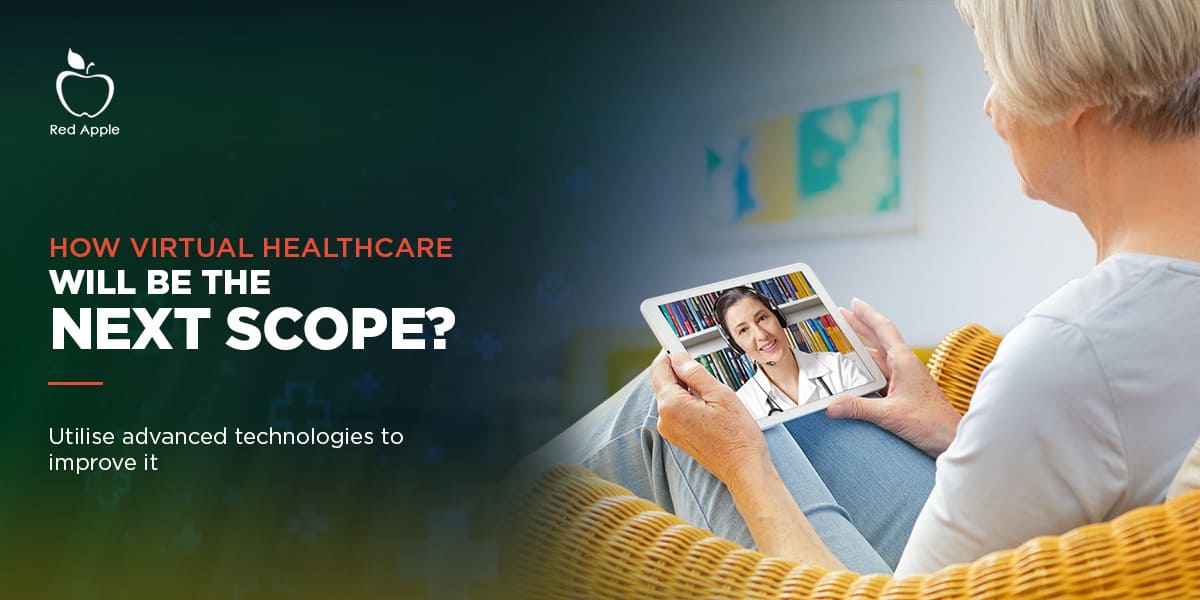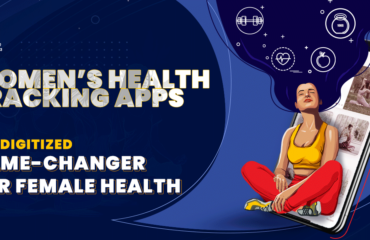
The outbreak of the Covid-19 pandemic in the past years has highlighted the importance of virtual care. This contactless medium has helped to mitigate the coronavirus spread and also enabled the segregated patients to communicate with their doctors very easily. Besides, it has also served the non-Covid-19 people quite well during the pandemic period.
As the Covid-19 is not yet over, the importance of online healthcare services like telehealth has started to gain a widespread response across the world. Many health experts believe that it is time to expand the virtual healthcare technology utilisation to serve the patients well even during the Covid-19 crisis hours and after. No doubt that in the coming days, this advanced medium will emerge as a crucial pillar that provides effective and agile care under the appropriate clinician at the scheduled location and right time. Using this medium properly will also help to improve the in-patient solutions quite well. Besides, it will also help to streamline the overall health system rapidly and improve the experience of the patients.
What is Virtual Healthcare?
Virtual healthcare is an advanced remote medium that offers personalised treatment services to patients quite conveniently. It involves the utilisation of audio and video calls, text messaging, health apps, and other cutting-edge communication mediums. This medium helps the doctors well to serve the patients during pandemic-like situations very smoothly. Besides, it also allows the patients and their relatives to consult a doctor from anywhere to take the right medicines very conveniently.
Virtual Healthcare Market Size
In 2019, the market value of the virtual healthcare industry was $175 billion. However, the market value will reach the level of $660 billion in 2025. Such an astounding growth may occur as a result of factors like-
- Sharp population growth
- Expansion of healthcare accessibility
- Rising contagious diseases
- Clinical staffs shortage
- Improve treatment experience
- Advanced communication system
- Government assistance.
At present, the healthcare industry is embracing new technologies. This will help to accomplish the objective of rising patient engagement, curtailing expenses, promoting convenience, and overall satisfaction improvement. In such a scenario, the concept of ‘virtual healthcare’ will usher a new period of predictive applications and tools to augment the available data to boost the overall results. This will assist the doctors to reach out to their patients easily and serve them with the best treatment solutions. Patients also have the opportunity to reap the dividends of this powerful medium to interact and consult the doctors during the time of emergency from anywhere.
It is time to upgrade the existing virtual healthcare system with the advancement of cutting-edge technologies like augmented and artificial intelligence, wearables, home-centric care applications, and others to deliver outstanding industry results. Inducting such advanced technologies will result in the formation of a comprehensive ecosystem that shall enable the health experts to deliver improvised outcomes and care to the vast patient segment without depending on the physical infrastructure.
Role of Technology Integration in Online Healthcare
The idea of virtual healthcare is nothing new. The sole purpose is to satisfy the growing consultation needs of the patients from any place without visiting clinics frequently. The adoption of the latest technologies will further enrich the consultation experience of the patients. It is time to highlight the impacts of integrating cutting-edge technologies like-
Augmented and Artificial Intelligence
When it comes to serving in-house patients, online healthcare works quite well. It is time to enhance the service standard of such a platform with the proper synchronisation of augmented and artificial intelligence. Both these technologies are the same. They tend to improve the service standards which patients will continue to appreciate. The recent advancements in this synchronised technology will raise the insights of the clinic experts and subsequently enhance their capabilities to serve more patients without experiencing staff shortages or other challenges. However, it will be completely wrong to ignore the human involvement that eventually results in the union of health technology and service delivery. The main reason behind the combination of artificial and augmented intelligence is to accomplish a faster and more accurate interpretation of the available data. In this regard, augmented reality also has the potential to upgrade the virtual healthcare service infrastructure to the next level.
Presently, every health company intends to utilise superior healthcare app development solutions. The sole objective is to accomplish the task of information augmentation which shall eventually complement and enhance the conventional clinical workflow. It is very hard to replace experienced and knowledgeable caregivers. The need of the hour is to make them very effective by augmenting the available data at an early stage. There are different options to augment your data collection effort that include constant patient observation using a virtual medium and proper utilisation of predictive algorithms. Both these methods will allow the caregivers to anticipate in advance the probable outcome depending on the patient’s health conditions. Ultimately it will enable them to serve every patient with personalised care.
Wearables
The emergence of the internet of things (IoT) has subsequently raised the importance of wearable devices like fitness trackers, biosensors, smartwatches, and others. These devices are assigned to perform specific tasks in coordination with other appliances under the IoT technology. Integrating remote technologies like IoT into the online healthcare system will help the doctors constantly track the condition of every patient quite smoothly. Receiving such vital data at an early stage shall ultimately help them to assess the potential risks very easily. Ultimately, they shall have the required time to intervene and help patients to escape the terrible outcome as early as possible.
These interactive IoT-based wearables can also motivate patients to make the correct decisions regarding their health on a real-time basis. Depending on the health condition, these wearables assist them to spot the ideal personalised treatment solutions within a short time. Such appliances are gradually evolving as a crucial pillar of online healthcare infrastructure where patients will receive an engaging treatment experience.
Two-Way Video
Presently, every healthcare organisation intends to combine powerful technologies like videotelephony, and others to deliver a better and more engaging service experience to their patients. As a result, developers are working hard to add such interactive technologies while accomplishing the healthcare app development projects. Adding such an interactive feature will further boost the telehealth ecosystem that has already performed well during the pandemic times. Using this interactive feature will increase operational efficiency, improve patient and staff safety, and minimise healthcare inequalities.
Home Care Applications
The telehealth system has worked well to serve the patients flawlessly during the pandemic times. Such a contactless approach has earned the appreciation and support of the global health community. Presently, hospitals are seeking advanced technology solutions that shall help to raise the healthcare involvement in the home of every patient. Initially, such a necessity had erupted to serve the isolated patients at home. Now, the expectation has further increased to attain a smooth and accessible treatment solution. The virtual health care model is the manifestation of the erstwhile house visit trend that was once prevalent among doctors. But with the emergence of advanced technologies, doctors can connect with the patients and vice-versa from a virtual platform very easily and comfortably. Such communication progress will also help to reduce the travel expense of the patient and doctor throughout the year. No doubt that the emergence of home-centric healthcare apps will boost the virtual healthcare platform to prevent clinical workers from the patients infected by contagious diseases.
How Red Apple Will help you to Utilise Virtual Healthcare
At Red Apple Technologies, we always like to work on trending technologies that will serve the industries better. Our app developers focus on utilising the latest technology solutions to improve your health care experience throughout the year. We have already served the health industry by devising various healthcare apps that are packed with rich gaming features to deliver an immersive experience to the patients. Want to assign us the mobile app development projects? We are ready to serve you with the latest technology integration that will deliver outstanding results in the virtual healthcare sector.
Conclusion
The need for a contactless virtual medium has gained much prominence during the Covid-19 pandemic. No doubt, virtual healthcare has been able to meet such an expectation very successfully. However, it is also necessary to upgrade this virtual medium with time. The feasible way to accomplish this objective is by synchronising augmented and artificial intelligence, IoT, and so on. It will help the patients to derive a better healthcare experience with time.
What are the virtual healthcare advantages?
Answer:
Virtual healthcare arrives with a plethora of benefits like-
- Maximum convenience
- Improved accessibility
- Better care
- Minimum costs
- Proper care from any place
- Smooth handling of serious conditions
- Instant treatment solution to overcome critical symptoms
How Does Virtual Healthcare Work?
Answer: You just need to use virtual communication tools like Skype, WhatsApp, or others to schedule an appointment with a doctor. During the scheduled appointment, an experienced doctor will supervise your overall condition visually and shall also refer to your past medical records to prescribe the right treatment.
Is virtual healthcare safe and comfortable?
Answer: It is a contactless and safe medium. Doctors are free from the infection exposure risk as well as patients are also not subjected to unhygienic environmental exposure.
Why Should I Avail Virtual Healthcare?
Answer: It is an advanced medium that shall enable you to derive personalised treatment from doctors. Besides, it will assist the doctors to keep an active track of your health conditions to avoid the chances of deterioration.






























 Book an Appointment
Book an Appointment Get Instant Project Estimation
Get Instant Project Estimation WhatsApp Now
WhatsApp Now

